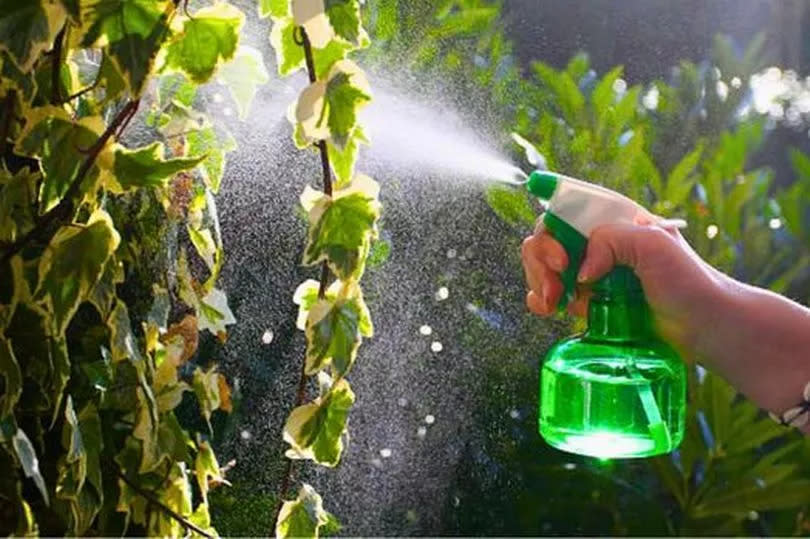Gardening expert shares 'absolute easiest' way to remove ivy from garden and home

While ivy can be aesthetically pleasing in gardens, when unchecked it can rapidly spread and wreak havoc on your cherished flora and potentially damage the structure of your property. Ivy vines are known to creep onto structures and infiltrate cracks, which over time can cause substantial structural harm.
Gardening and DIY enthusiast Brittany Bailey, of Pretty Handy Girl, however, offers a lifeline, sharing her "absolute easiest" method to eliminate unwanted ivy from your garden and stop its return. She declares: "No back-breaking pulling or bending over. This is truly the best way to remove English ivy."
Here's Brittany's guide on how to get rid of English ivy:
The first step is ensuring you're properly equipped for the task. Wear sturdy work boots, long trousers, a long-sleeved top along with gardening gloves and safety glasses.
Brittany emphasises the necessity to "gear up" for tackling ivy, as this plant often provides a hideout for many pests such as spiders and rodents - so utmost protection is always paramount, reports the Irish Mirror.
Now, to get started, you'll want to cut the ivy at first. For optimal results, follow up the cutting with either a herbicide or an all-natural homemade solution to completely eradicate the ivy.
Bearable though it comes with its wax-like foliage that hinders its eradication, slicing through the vines initiates an "open wound" in the plant, assisting in absorbing any ivy-dissolving solution more efficiently.
To manage ivy infestations, employ loppers or pruners to sever the ivy near the ground and tenderly remove the roots, avoiding total extraction as it may harm the attached surface. Brittany advises: "Resist the urge to pull the vines off because it can damage the bark. Once the ivy dies the greenery will turn brown and will eventually fall off."

Where ivy infiltrates ground cover, expedite removal using a lawn mower, clearing any rubbish encircling the ivy.
Next, to ensure definitive eradication use an herbicide containing glyphosate, triclopyr, and imazapyr. If you prefer eco-friendly strategies, Brittany suggests: "If you want to go natural, you can use one gallon of white vinegar mixed with a teaspoon of dish soap, just be very careful not to get this mixture on any plants or trees you want to keep."
After a week, the ivy would likely commence wilting and loosen its grip. Your task then is to simply employ a garden rake to dispense of any lingering ivy vines on the ground.
Brittany advises: "If any roots resist raking, use a hoe to dig the roots out. This process will be much easier after a rainy day as the ground will be softer."
Observation of the affected area in the weeks following is recommended to prevent regrowth, but maintaining this method is regarded as the most efficient means to permanently banish ivy from your garden.

 Yahoo News
Yahoo News 
